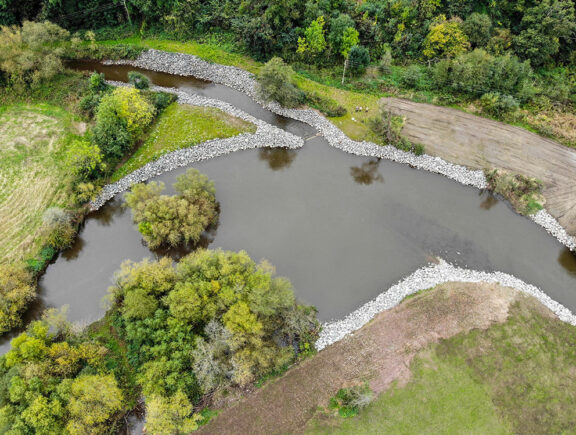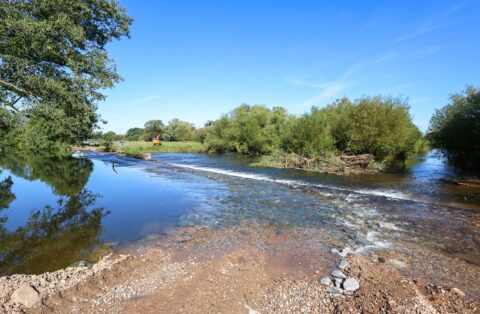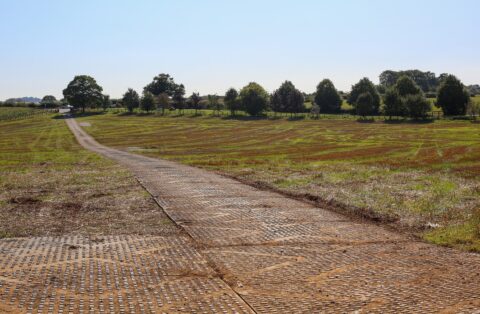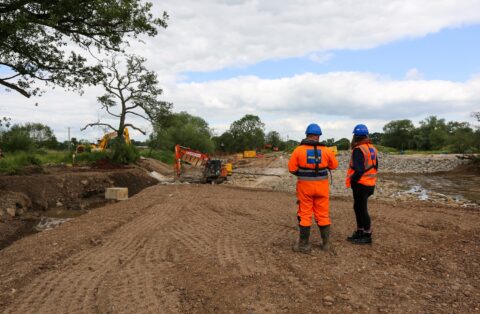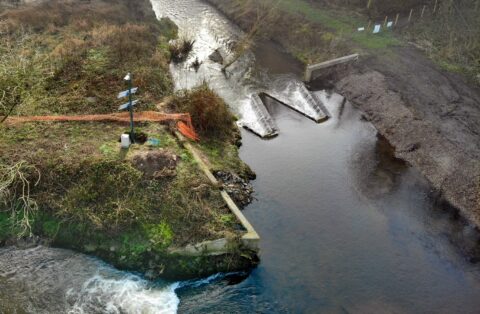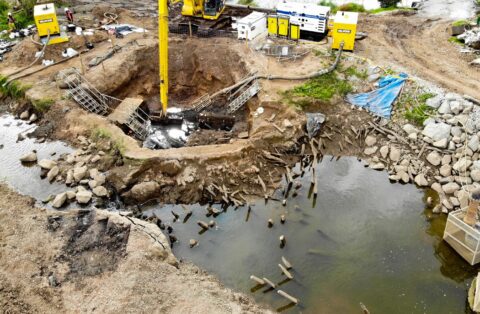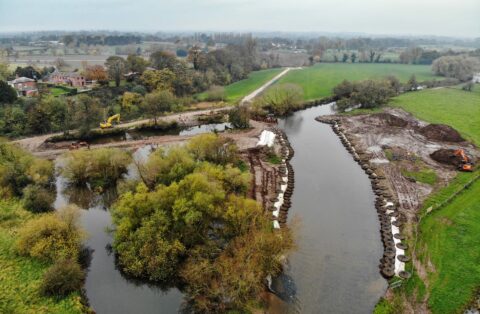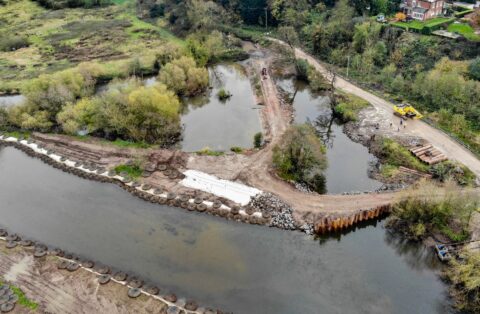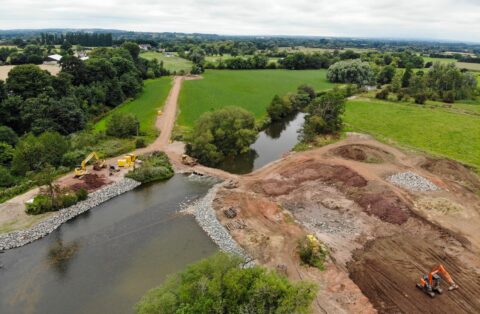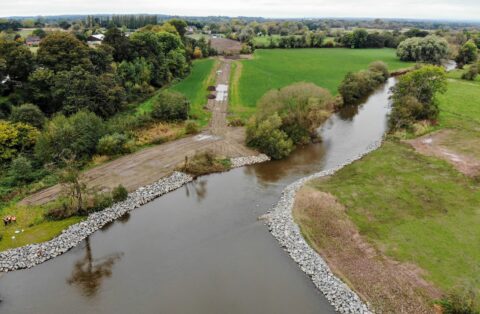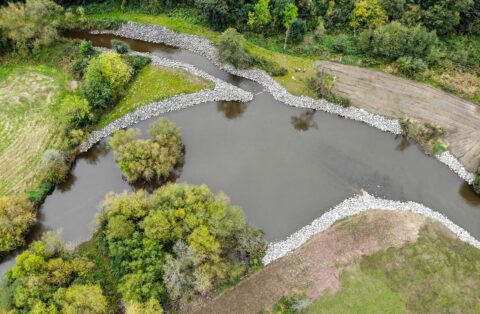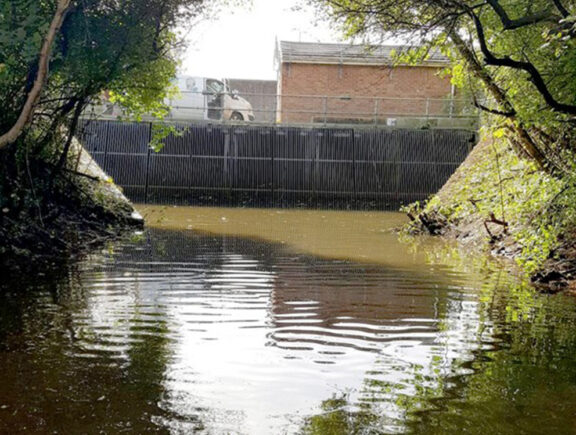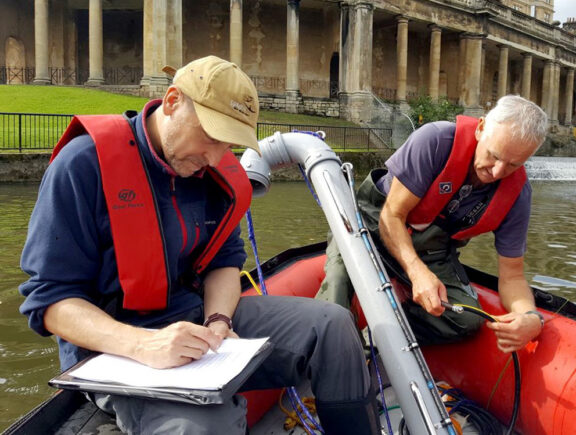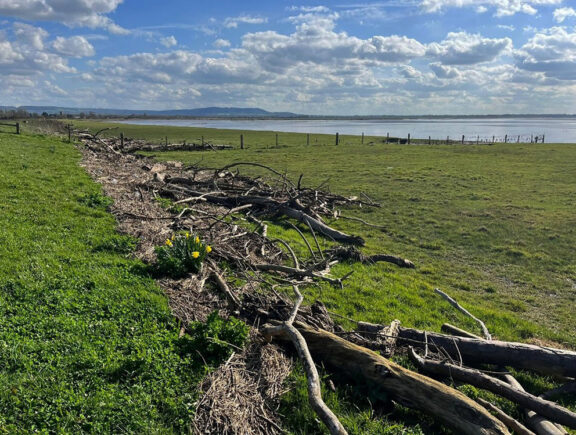Project in numbers
150 metre bypass channel was excavated to temporarily divert the river
16 different species recorded during a significant fish rescue
The need
The weir at Dovecliff, Derbyshire, dated back to the 1200s and was designed to deliver a head of water for powering mills. Since becoming redundant, it had fallen into disrepair. The weir therefore posed a risk to public safety as well as a significant barrier to the migration of fish.
It would have been economically unfeasible to replace or to continue to maintain the weir, yielding little benefit. Therefore, the Environment Agency decided to remove it, restore the natural river processes, and thereby enhancing biodiversity and protecting endangered species.
The solution
In the largest project of its kind in the country, the Environment Agency asked us to remove the 70-metre-wide weir.
First, we installed 500 metres of trackway access. We then temporarily diverted the River Dove by excavating a bypass channel 150 metres long and 10 metres wide. Our specialist team conducted a fish rescue, in which 16 species were recorded, before dewatering the works area and sealing it off with a sheet-pile wall upstream and a temporary Portadam downstream. We used a hydraulic breaker to demolish the weir in sections, saving the material for reuse in strengthening the new channel walls.
A great deal of care was taken over the historical and environmental importance of the weir. Due to the presence of the remains of the original weir, dating back to medieval times, archaeologists were enlisted over a 6-month period to supervise digging and carefully record the location of over 1,000 timbers, which were reburied afterwards.
In addition to the main weir, a smaller, W-section barrier was removed from the leat (an artificial watercourse dug into the ground to supply water to mills), and this channel was widened. Because the River Dove is used for abstraction, supplying water to most of Derbyshire, this important channel was reconnected on the outside of the completed river bend to maintain its flow. A minimally invasive stop log was installed so that the water level is maintained during low flows to protect the ecology.
The works were completed around significant flooding, during one of the wettest winters on record. Multiple rescues were completed to protect fish without impacting on spawning.
Following the weir’s removal, the river channel was reconstructed in accordance with the Environment Agency’s design. Around 6,000 tonnes of locally won earth and shingle, and a similar weight of granite rip rap stone, were used to form and strengthen the new riverbanks to help prevent erosion.
The benefits
- Removing the weir has opened up the Dove catchment for over 340 miles
- The water level upstream of the weir has since dropped by approximately one metre, allowing natural ecological processes to recommence
- The channel now benefits from a more natural river bend, allowing normal sedimentation and providing significantly improved spawning grounds and habitat.
- Fish and other wildlife can now enjoy free passage for the first time in almost 900 years, enhancing biodiversity and protecting endangered species
